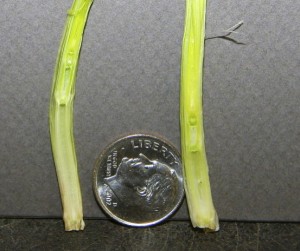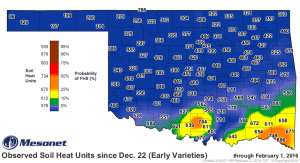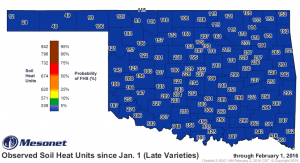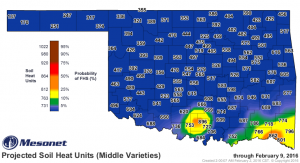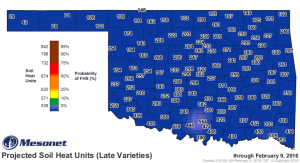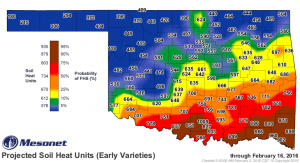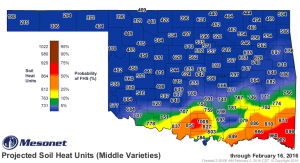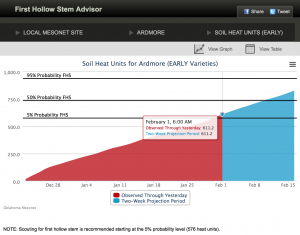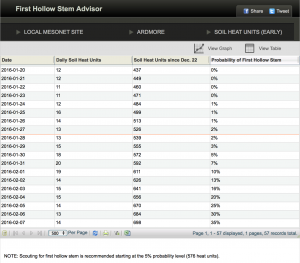One day winter comes calling. The next day you open the door to a warm, blast of air. If you’re a farmer or rancher considering when to pull cattle off of wheat pasture, what are you using to make that decision? Best guess or measure?
(Image: Todd Johnson, OSU DASNR)
There is a way to monitor when to move cattle off of wheat. It combines going to the field to check wheat stems for first hollow stem and the Mesonet First Hollow Stem Advisor. The Mesonet weather-based advisory uses soil temperature to estimate wheat development. It is an early indicator of when wheat fields need to be checked for first hollow stem. The length of that hollow in the central stem area near the base of the largest tillers indicates the best time to pull cattle off of wheat. When the hollow area becomes longer than the width of a dime (left wheat stem), the wheat has reached first hollow stem.
(Image: Jeff Edwards, OSU Plant and Soil Sciences)
You’ll find the Mesonet First Hollow Stem Advisor on the Oklahoma Mesonet website under the Agriculture section in either the Cattle or Wheat categories. The First Hollow Stem Advisor uses maps to show the accumulated soil temperature heat units. Colors indicate heat unit accumulation and probability of reaching first hollow stem stage.
(Image: Dave Deken, OSU DASNR SUNUP)
Scouting is recommended when a wheat field falls into the 5% probability of first hollow stem, green colored map areas. If scouting can not be done, it is recommended to move cattle off of wheat when the First Hollow Stem Advisor indicates 50% probability, red colored map areas.
You’ll need to know what first hollow stem group your wheat variety falls into. This can be different from the harvest maturity group. Click HERE to see a printable list of 2016 wheat varieties with early, middle, or late first hollow stem categories.
These are the maps of wheat first hollow stem through February 1, 2016 for early, middle, and late groups.
Looking ahead one week, here are the projected soil heat units and probabilities of first hollow stem through February 9, 2016 for all three groups.
Going out two weeks, here are the projected soil heat units and probabilities.
These maps show you how planting late first hollow stem varieties can give you a lot more grazing time before the first hollow stem stage arrives.
You also have the option of looking at seasonal heat unit accumulations for a single Mesonet site by graph or table. Graphs and tables are available for all three groups, early, middle, and late. The reddish area on the graph shows observed Mesonet data, while the bluish area shows projected heat units. Graphs include 5%, 50%, and 95% probability lines.

